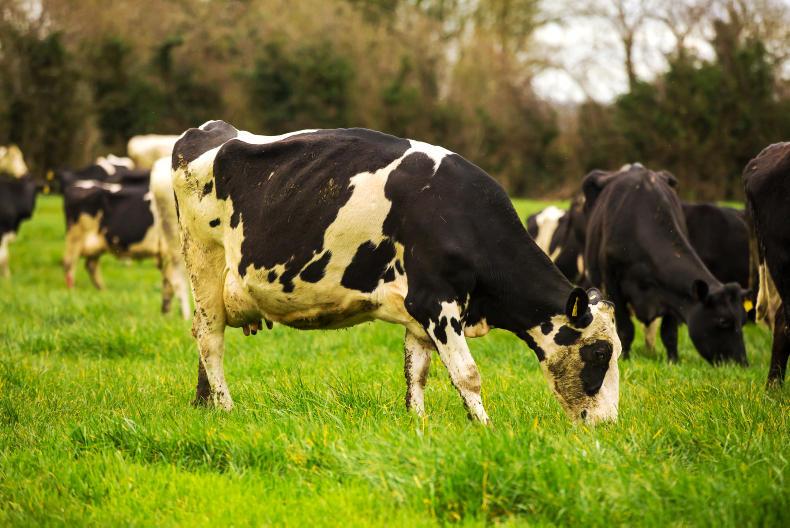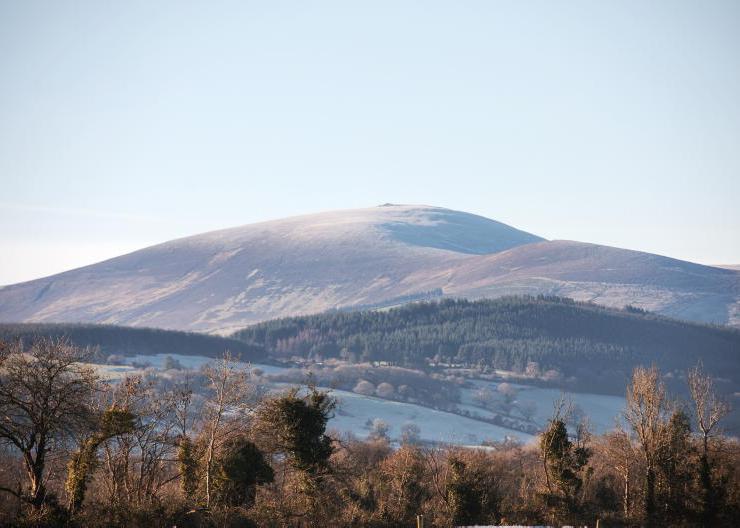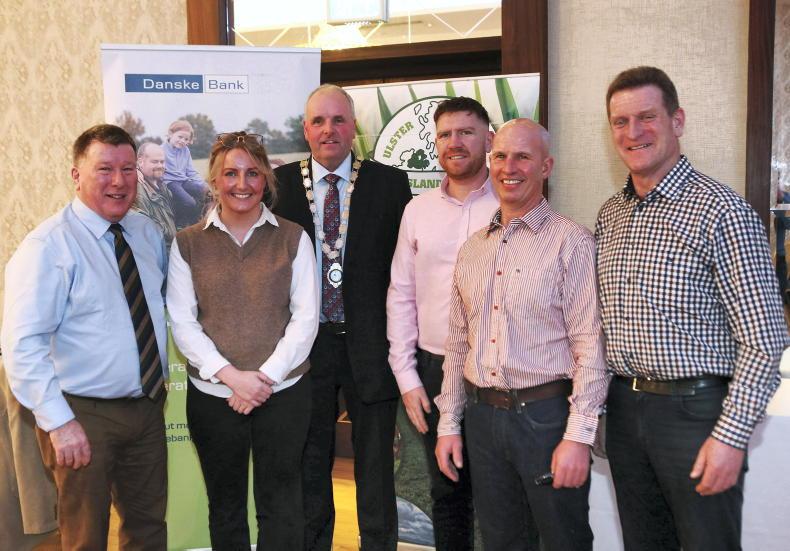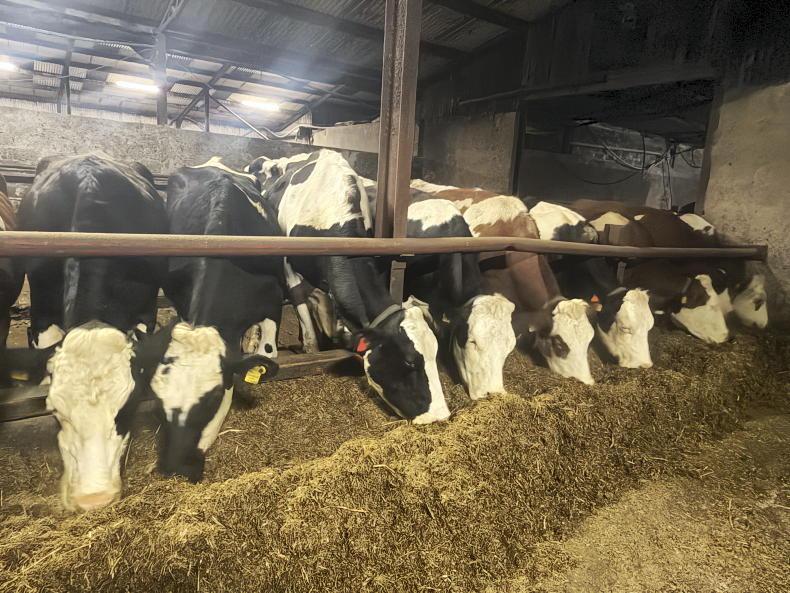Although figures for greenhouse gas emissions from agriculture are slightly lower than in preliminary estimates published last November, the Environmental Protection Agency’s (EPA) full report for 2017 still shows an increase in Irish agriculture’s contribution to climate change.
Irish farms released 19.6m t of carbon dioxide equivalent (CO2e) in the atmosphere that year – a 2.8% increase on 2016.
Agriculture accounted for 32.2% of all greenhouse gas emissions in the country.Unlike previously estimated, emissions from the national economy did not decrease last year. In fact, they increased by 2.6% and agriculture’s contribution was in line with that. Emissions from manufacturing and other industries increased faster than the rest of the economy. However, land transport and electricity generation, the two largest sectors after agriculture, achieved cuts in 2017.
Compared with the reference year 1990 used in international agreements, Irish agriculture is almost exactly where it was at that time. Meanwhile, emissions from transport rose by 133%, those from power generation by 3.8% and the national figure by 10.9%.
Within agriculture, the EPA attributed growth in emissions to increased production, “in particular in the dairy sector”. Methane from enteric fermentation in cattle caused the largest increase in greenhouse gases from farming in 2017. On the one hand, cattle numbers increased by 132,000hd, with dairy cows and heifers making up nearly half of this. On the other hand, each dairy cow belched more methane than in the previous year, as farmers increased milk supply, while emissions per head for other categories of cattle remained stable.
Sheep numbers also increased by 350,000hd in the 2017 inventory, and caused a jump in methane emissions from the national flock – but sheep emit a lot less greenhouse gas than cattle, so their total contribution remained over 10 times smaller.
Another big contributor to emissions was nitrogen fertilisation. It releases nitrous oxide gas from the soil, which contributes strongly to global warming. These emissions jumped by over 5% in 2017, causing nearly as much of an increase as cattle. By contrast, there was a lot less lime spread in 2017. As carbon dioxide is released in the process, this reduced emissions by 100kt CO2 that year.
Farming emissions can vary from year to year depending on weather conditions. Over the 27 years since the 1990 reference year, very little change has been seen, with enteric fermentation in ruminants going down, then picking up since the end of milk quotas in 2015.
Emissions from lime and urea are exceptions, with both falling significantly since 2017.
Are farms storing any carbon?
There has been a lot of talk about the potential for farms to balance their emissions by storing carbon dioxide in vegetation and soils – so-called carbon sequestration. However, the chapter of the EPA’s inventory report on land use, land use change and forestry (LULUCF) reveals that we have so far released more CO2 than we have stored.
“The LULUCF sector is a net source of emissions in all years, with the losses of carbon dominated by the impact of drainage of organic soils in grasslands and wetlands, and gains in biomass carbon increasingly evident in forest land,” the EPA found.
Forests and croplands both removed a net amount of carbon from the atmosphere in 2017. But this was more than negated by the carbon dioxide released from grassland and wetlands.
The drainage of organic soils is a “major source of emissions”, according to the EPA. As a result, Ireland’s landscape released nearly 6m t of CO2e into the atmosphere in 2017.
The EPA acknowledged that more research is needed to understand the role of soils. This includes an ongoing project to combine the recent map of Irish soils with land use and soil carbon information to produce a “national land use map”.
While this project is at an early stage, it could have major implications to direct agriculture at the local level in the future. Another area of current research identified by the EPA is hedgerows, with hopes that their sequestration could also be measured.
However, EPA emissions expert Bernard Hyde told the Irish Farmers Journal that our 600,000km of hedgerows are currently estimated to store between 100 and 500kt CO2e annually.
“They have some potential, but are unlikely to become a major sink compared to forestry or wetlands,” Hyde said, adding that the EPA recommends taking action in all sectors including agriculture to move to a low carbon economy.
Read more
Applications double for dairy energy grants
Map: how soil carbon may shape the future of farming
Climate change mitigation and forestry
Planes release as much greenhouse gas as livestock
Although figures for greenhouse gas emissions from agriculture are slightly lower than in preliminary estimates published last November, the Environmental Protection Agency’s (EPA) full report for 2017 still shows an increase in Irish agriculture’s contribution to climate change.
Irish farms released 19.6m t of carbon dioxide equivalent (CO2e) in the atmosphere that year – a 2.8% increase on 2016.
Agriculture accounted for 32.2% of all greenhouse gas emissions in the country.Unlike previously estimated, emissions from the national economy did not decrease last year. In fact, they increased by 2.6% and agriculture’s contribution was in line with that. Emissions from manufacturing and other industries increased faster than the rest of the economy. However, land transport and electricity generation, the two largest sectors after agriculture, achieved cuts in 2017.
Compared with the reference year 1990 used in international agreements, Irish agriculture is almost exactly where it was at that time. Meanwhile, emissions from transport rose by 133%, those from power generation by 3.8% and the national figure by 10.9%.
Within agriculture, the EPA attributed growth in emissions to increased production, “in particular in the dairy sector”. Methane from enteric fermentation in cattle caused the largest increase in greenhouse gases from farming in 2017. On the one hand, cattle numbers increased by 132,000hd, with dairy cows and heifers making up nearly half of this. On the other hand, each dairy cow belched more methane than in the previous year, as farmers increased milk supply, while emissions per head for other categories of cattle remained stable.
Sheep numbers also increased by 350,000hd in the 2017 inventory, and caused a jump in methane emissions from the national flock – but sheep emit a lot less greenhouse gas than cattle, so their total contribution remained over 10 times smaller.
Another big contributor to emissions was nitrogen fertilisation. It releases nitrous oxide gas from the soil, which contributes strongly to global warming. These emissions jumped by over 5% in 2017, causing nearly as much of an increase as cattle. By contrast, there was a lot less lime spread in 2017. As carbon dioxide is released in the process, this reduced emissions by 100kt CO2 that year.
Farming emissions can vary from year to year depending on weather conditions. Over the 27 years since the 1990 reference year, very little change has been seen, with enteric fermentation in ruminants going down, then picking up since the end of milk quotas in 2015.
Emissions from lime and urea are exceptions, with both falling significantly since 2017.
Are farms storing any carbon?
There has been a lot of talk about the potential for farms to balance their emissions by storing carbon dioxide in vegetation and soils – so-called carbon sequestration. However, the chapter of the EPA’s inventory report on land use, land use change and forestry (LULUCF) reveals that we have so far released more CO2 than we have stored.
“The LULUCF sector is a net source of emissions in all years, with the losses of carbon dominated by the impact of drainage of organic soils in grasslands and wetlands, and gains in biomass carbon increasingly evident in forest land,” the EPA found.
Forests and croplands both removed a net amount of carbon from the atmosphere in 2017. But this was more than negated by the carbon dioxide released from grassland and wetlands.
The drainage of organic soils is a “major source of emissions”, according to the EPA. As a result, Ireland’s landscape released nearly 6m t of CO2e into the atmosphere in 2017.
The EPA acknowledged that more research is needed to understand the role of soils. This includes an ongoing project to combine the recent map of Irish soils with land use and soil carbon information to produce a “national land use map”.
While this project is at an early stage, it could have major implications to direct agriculture at the local level in the future. Another area of current research identified by the EPA is hedgerows, with hopes that their sequestration could also be measured.
However, EPA emissions expert Bernard Hyde told the Irish Farmers Journal that our 600,000km of hedgerows are currently estimated to store between 100 and 500kt CO2e annually.
“They have some potential, but are unlikely to become a major sink compared to forestry or wetlands,” Hyde said, adding that the EPA recommends taking action in all sectors including agriculture to move to a low carbon economy.
Read more
Applications double for dairy energy grants
Map: how soil carbon may shape the future of farming
Climate change mitigation and forestry
Planes release as much greenhouse gas as livestock










SHARING OPTIONS